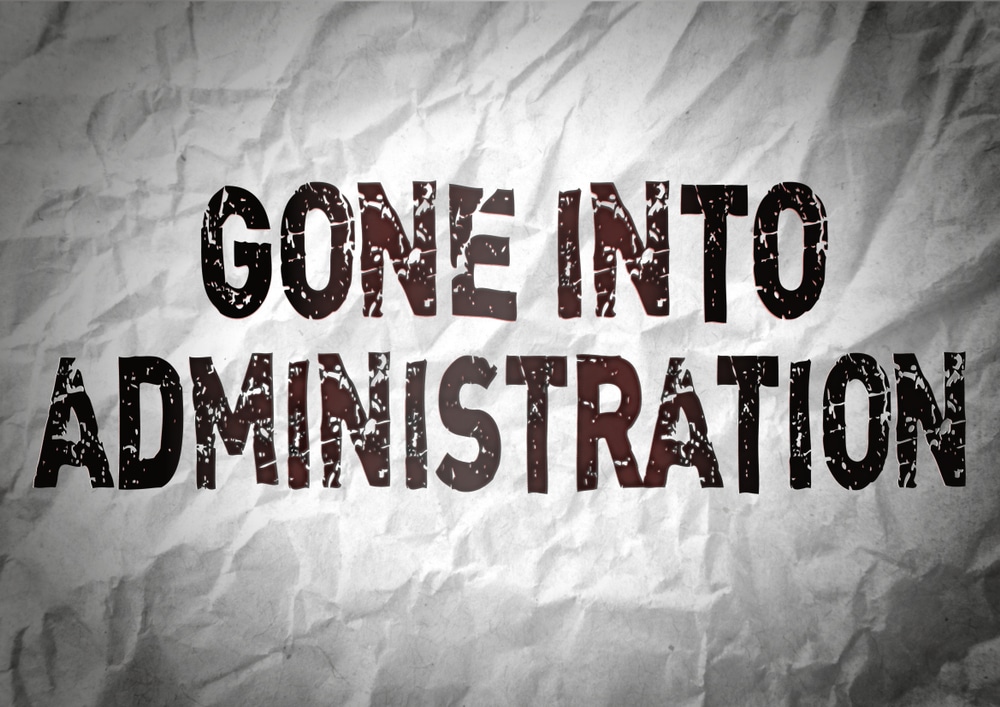Explained: Company Administration UK and What It Indicates for Companies
Explained: Company Administration UK and What It Indicates for Companies
Blog Article
The Process and Repercussions of a Firm Coming In Management
As a firm encounters financial distress, the decision to enter administration marks a crucial point that can have significant ramifications for all included celebrations. The process of going into management is detailed, including a collection of steps that intend to navigate the company in the direction of possible recovery or, in many cases, liquidation. Comprehending the functions and responsibilities of a manager, the impact on various stakeholders, and the legal commitments that enter into play is crucial in understanding the gravity of this scenario. The repercussions of such a step ripple beyond the firm itself, forming its future trajectory and influencing the broader business landscape.

Overview of Business Management Process
In the world of company restructuring, a vital first step is getting a comprehensive understanding of the complex firm administration procedure. Firm management refers to the formal bankruptcy treatment that aims to rescue an economically troubled company or achieve a better result for the business's financial institutions than would be possible in a liquidation situation. This procedure entails the appointment of an administrator, that takes control of the firm from its supervisors to assess the monetary circumstance and establish the most effective program of action.
Throughout management, the firm is provided defense from legal action by its creditors, offering a postponement duration to develop a restructuring strategy. The manager deals with the firm's monitoring, financial institutions, and various other stakeholders to devise a strategy that may involve selling business as a going issue, reaching a business voluntary arrangement (CVA) with creditors, or ultimately placing the company into liquidation if rescue efforts confirm useless. The key objective of business administration is to take full advantage of the return to lenders while either returning the company to solvency or closing it down in an organized fashion.
Functions and Obligations of Administrator
Playing a pivotal role in overseeing the firm's monetary affairs and decision-making processes, the administrator thinks substantial obligations throughout the business restructuring procedure. The main task of the administrator is to act in the finest rate of interests of the business's financial institutions, aiming to attain one of the most positive outcome possible. into administration. This includes carrying out an extensive assessment of the firm's monetary situation, creating a restructuring plan, and applying methods to make the most of go back to lenders
In addition, the administrator is accountable for communicating with numerous stakeholders, including staff members, providers, and governing bodies, to guarantee openness and compliance throughout the management procedure. They should additionally communicate properly with shareholders, supplying normal updates on the company's progression and seeking their input when necessary.
In addition, the administrator plays a vital role in handling the everyday procedures of the company, making crucial choices to maintain continuity and maintain worth. This includes assessing the stability of various restructuring options, discussing with financial institutions, and ultimately directing the business in the direction of an effective leave from administration.
Effect On Business Stakeholders
Assuming an important position in supervising the business's decision-making procedures and economic events, the manager's actions during the corporate restructuring procedure have a straight effect on different business stakeholders. Shareholders may experience a decrease in the worth of their investments as the business's financial troubles are resolved. Financial institutions, consisting of providers and lenders, might deal with uncertainties pertaining to the settlement of financial obligations owed to them. Employees often run into task insecurities as a result of prospective layoffs or adjustments in job conditions as component of the restructuring efforts. Customers might experience disruptions in solutions or product availability throughout the administration procedure, impacting their trust and commitment towards the firm. Additionally, the area where the business runs might be influenced by prospective job losses or modifications in the company's procedures, influencing regional economies. Efficient communication from the administrator to stakeholders is Learn More crucial in handling expectations, alleviating concerns, and promoting openness throughout the administration procedure.
Legal Implications and Responsibilities
Throughout the process of company management, mindful factor to consider of the legal implications and commitments is critical to make sure compliance and protect the passions of all stakeholders included. When a business enters management, it sets off a set of lawful demands that must be stuck to.
Furthermore, legal effects occur concerning the therapy of employees. The manager should adhere to work laws pertaining to redundancies, worker rights, and responsibilities to provide essential info to staff member agents. what does it mean to go into administration. Failure to adhere to these legal needs can result in lawful activity against the firm or its administrators
In addition, the firm getting in management might have legal responsibilities with different celebrations, consisting of customers, landlords, and distributors. In significance, understanding and fulfilling legal commitments are critical elements of browsing a business via the administration procedure.
Techniques for Firm Recovery or Liquidation
In taking into consideration the future direction of a company in administration, tactical planning for either recuperation or liquidation is vital to chart a feasible course onward. When going for business recovery, crucial approaches may include conducting a thorough analysis of business procedures to identify ineffectiveness, renegotiating agreements or leases to enhance cash circulation, and carrying out cost-cutting actions to boost profitability. In addition, seeking new investment or funding options, diversifying earnings streams, see this here and concentrating on core proficiencies can all add to an effective recovery strategy.
Alternatively, in situations where company liquidation is considered the most appropriate course of activity, methods would certainly include optimizing the worth of possessions with efficient property sales, clearing up exceptional financial useful reference debts in an organized way, and following lawful requirements to make sure a smooth winding-up process. Communication with stakeholders, consisting of customers, employees, and lenders, is essential in either circumstance to keep openness and take care of assumptions throughout the recuperation or liquidation procedure. Ultimately, picking the right technique depends on an extensive evaluation of the business's economic health and wellness, market setting, and long-lasting potential customers.
Verdict
To conclude, the procedure of a business getting in management entails the visit of a manager, who takes on the duties of taking care of the firm's affairs. This process can have significant repercussions for various stakeholders, consisting of creditors, shareholders, and workers. It is necessary for business to meticulously consider their options and approaches for either recovering from financial difficulties or continuing with liquidation in order to alleviate prospective lawful effects and obligations.
Firm management refers to the official bankruptcy procedure that intends to save a financially distressed firm or achieve a much better outcome for the firm's creditors than would certainly be possible in a liquidation scenario. The administrator works with the company's monitoring, creditors, and other stakeholders to develop an approach that might entail offering the business as a going problem, reaching a business voluntary arrangement (CVA) with creditors, or ultimately putting the company right into liquidation if rescue attempts prove useless. The primary objective of company administration is to make the most of the return to creditors while either returning the business to solvency or closing it down in an orderly way.

Report this page